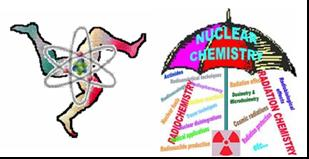Speaker
Dr
Gabriella Mangano
(Dipartimeno di Fisica e Astronomia Università di Catania, CSFNSM)
Description
In soil radon measurements are often a tool used to investigate geophysical events. The radon exhalation depends on several parameters, the most important ones are the meteorological variables (temperature, humidity, atmospheric pressure, wind velocity and rain) and soil characteristics (porosity, permeability, ..).
Areas in which fault systems insist, are characterized by specific profiles of emission of radon gas owing to the presence of visible or not visible faults in the soil with a defined spatial orientation. To study the behavior of in soil radon along a fault, we investigated as first a well known fault: the Pernicana one.
Three different methodologies were used to measure Radon. The first technique consisted in Solid State Nuclear Track Detectors, CR-39 type, and allowed integrated measurements. The second one consisted in a portable device for short time measurements. The last consisted in a continuous measurement device for long time monitoring, placed in selected sites. Two different soil gas horizontal profiles were investigated across the fault. The results obtained with the three methodologies are in general in agreement with each other and reflect the tectonic settings of the investigated area. The lowest Radon values were recorded just on the fault plane, and relatively higher values were recorded a few tens of meters from the fault axis on both of its sides. Comparing the methodology we can affirm that, spot measurements are useful for the quick recognition of high emission sites, to be later monitored for Radon variations in time. SSNTD measurements allow for the time monitoring of a relatively large number of sites, although they lose detail on the short-term changes due to their long integration time. Continuous monitoring probes are optimal for detailed time monitoring, but they are expensive and can thus be used to complete the information acquired with SSNTD in a network of monitored sites.
Primary authors
Dr
Daniela Morelli
(Dipartimento di Fisica e Astronomia -Università degli studi di Catania,INFN sezione di Catania)
Dr
Gabriella Mangano
(Dipartimeno di Fisica e Astronomia Università di Catania, CSFNSM)
Prof.
Giuseppina Immè
(Dipartimento di Fisica e Astronomia -Università degli studi di Catania,INFN sezione di Catania)
Dr
Roberto Catalano
(Dipartimento di Fisica e Astronomia -Università degli studi di Catania,INFN sezione di Catania)




